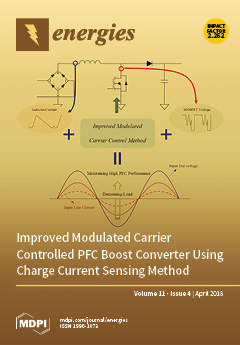The aim of this paper is to numerically investigate cooling performances of a non-film-cooled turbine vane coated with a thermal barrier coating (TBC) at two turbulence intensities (
Tu = 8.3% and 16.6%). Computational fluid dynamics (CFD) with conjugate heat transfer (CHT) analysis
[...] Read more.
The aim of this paper is to numerically investigate cooling performances of a non-film-cooled turbine vane coated with a thermal barrier coating (TBC) at two turbulence intensities (
Tu = 8.3% and 16.6%). Computational fluid dynamics (CFD) with conjugate heat transfer (CHT) analysis is used to predict the surface heat transfer coefficient, overall and TBC effectiveness, as well as internal and average temperatures under a condition of a NASA report provided by Hylton et al. [NASA CR-168015]. The following interesting phenomena are observed: (1) At each
Tu, the TBC slightly dampens the heat transfer coefficient in general, and results in the quantitative increment of overall cooling effectiveness about 16–20%, but about 8% at the trailing edge (TE). (2) The protective ability of the TBC increases with
Tu in many regions, that is, the leading edge (LE) and its neighborhoods on the suction side (SS), as well as the region from the LE to the front of the TE on the pressure side (PS), because the TBC causes the lower enhancement of the heat transfer coefficient in general at the higher
Tu. (3) Considering the internal and average temperatures of the vane coated with two different TBCs, although the vane with the lower thermal conductivity protects more effectively, its role in the TE region reduces more significantly. (4) For both TBCs, the increment of
Tu has a relatively small effect on the reduction of the average temperature of the vane.
Full article





